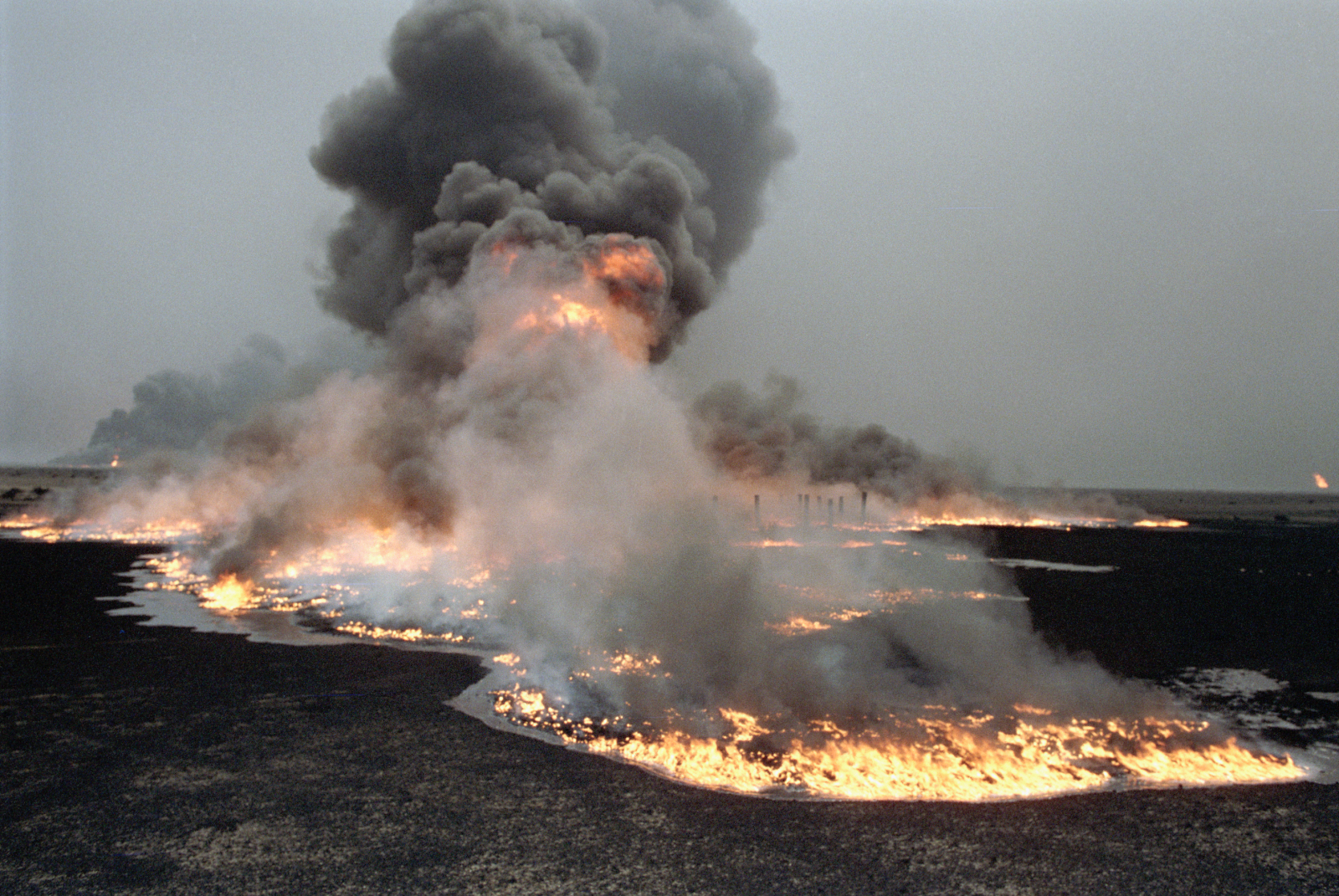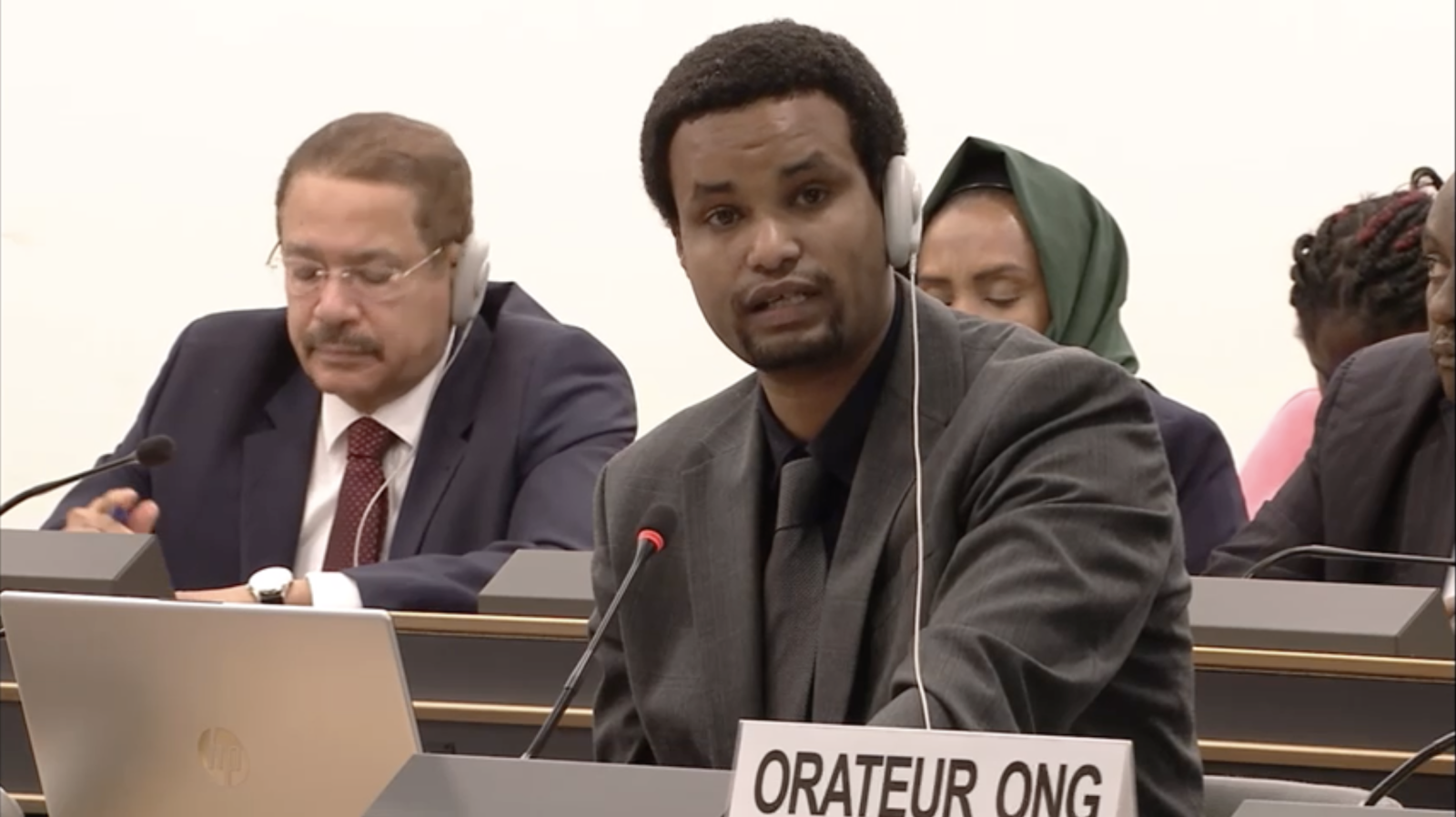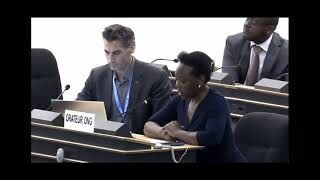 Photo credits: ©UN Photo/John Isaac (https://www.un.org/en/peace-and-security/how-conflict-impacts-our-environment)
Photo credits: ©UN Photo/John Isaac (https://www.un.org/en/peace-and-security/how-conflict-impacts-our-environment)
International Day for Preventing the Exploitation of the Environment in War and Armed Conflict - 6 November
By Astrid Bochnakian / GICJ
Introduction
Observed since 2001, the International Day for Preventing the Exploitation of the Environment in War and Armed Conflict aims at bringing awareness to the environmental toll of war and to the fact that natural resources can also be a driver of conflict. This day, declared as such by the UN General Assembly on 5 November 2001, is meant to highlight the importance of protecting the environment during and after conflicts, as damage to the environment can have long-lasting effects and hinder peace processes.
This International Day for Preventing the Exploitation of the Environment in War and Armed Conflict is especially relevant at a time when the world continues to grapple with a high number of active conflicts. It is also deeply connected to the UN Sustainable Development Goals (SDGs), which include both the protection of the environment and peace among its targets for the 2030 Agenda for sustainable development.
Why protect the environment in war and armed conflict?
Wars and armed conflicts can severely harm the environment through direct destruction, the use of toxic weapons, and have long-lasting legacies. Modern conflicts often target or incidentally destroy vital environmental infrastructure, including water systems, farmland, forests, and energy facilities. Such damage contaminates air, soil, and water, disrupts food production, and spreads disease. As natural resources are the basis of economic recovery and food security, damage hinders communities’ capacity to rebuild, perpetuating poverty and instability. Environmental degradation can therefore prolong displacement and hinder peacebuilding. War’s environmental toll can also last for decades: toxic soils, deforestation, and lost biodiversity leave legacies that harm future generations. Protecting the environment in war is thus an ethical imperative, ensuring that the right to life, health, and a habitable planet endures beyond the conflict itself.
Furthermore, protecting the environment is a legal obligation under international humanitarian law. The Geneva Conventions, under their 1977 Additional Protocol I, prohibit warfare that causes “widespread, long-term and severe damage” to the environment. The International Law Commission’s 2022 “Principles on the Protection of the Environment in Relation to Armed Conflicts (PERAC)” expands this obligation across all stages of conflict: before, during, and after hostilities. These norms reflect the understanding that protecting the environment is inseparable from protecting humanity itself.
But the environment is not solely a victim of wars and armed conflict: it can be a driver. As the UN Environment Programme (UNEP) has found, at least 40% of internal conflicts over the last 60 years have been linked to the exploitation of natural resources like timber, diamonds, gold, and oil. Additionally, natural resources can ignite new grievances in a post-conflict setting. Competition over water, oil, or arable land is a recurrent trigger for renewed violence. Safeguarding the environment and ensuring equitable access to resources is therefore a form of conflict prevention.
Case study (1): Israel’s environmental war on Gaza
A September 2025 UNEP report titled “The Environmental Impact of the Conflict in the Gaza Strip” revealed that the ongoing war has inflicted unprecedented damage on Gaza’s soils, freshwater supplies, and coastline, generating an environmental crisis of extraordinary magnitude. The report identifies widespread contamination of the Strip’s already scarce freshwater resources, largely resulting from the destruction of sewage and wastewater infrastructure. This has led to the infiltration of untreated waste and hazardous materials into groundwater, severely degrading water quality and contributing to a sharp rise in infectious diseases among an already vulnerable and displaced population.
The report also documents the extensive destruction of Gaza’s agricultural landscape: 97% of tree crops and 95% of shrubland have been decimated since 2023, resulting in the loss of over 80% of the territory’s annual crop production. This collapse of agricultural capacity, compounded by restrictions on humanitarian aid and imports of fuel and fertilisers, has critically undermined food security. In August 2025, UN Secretary-General António Guterres confirmed that these cumulative effects have produced conditions of famine in the Strip.
UNEP’s assessment further warns that large quantities of conflict debris, which contain asbestos, heavy metals, and unexploded ordnance, pose long-term risks to both human health and the environment. The agency issued thirty recommendations, including the urgent reconstruction of water and sewage infrastructure, the removal and safe disposal of debris and munitions, and the establishment of monitoring systems to track contamination levels.
It is important to note that, due to security concerns, the UNEP assessment relied primarily on satellite imagery and field observations from other UN agencies. As such, the report’s findings likely underestimate the true extent of the environmental devastation. The Gaza case thus exemplifies how modern warfare can generate compounding environmental and humanitarian crises, blurring the line between ecological destruction and collective punishment.
Case study (2): “Blood Gold” in Sudan
The war in Sudan between the Sudanese Armed Forces (SAF) and the Rapid Support Forces (RSF) is deeply shaped by the competition over lucrative gold mines. Since the secession of South Sudan in 2011, Sudan has lost most of its oil revenue and has become increasingly reliant on gold exports, which today constitute the backbone of its economy. This shift has turned gold into both a vital economic asset and a strategic prize in the current conflict. Control over mining sites, particularly in Darfur, South Kordofan, and Blue Nile, has become a key objective for both sides.
Gold extraction and trade in the region have fostered a wider “war economy” and a regional conflict ecosystem. The RSF has long controlled major gold-rich areas and smuggling routes, enabling it to build a quasi-autonomous financial base outside state structures. Through illicit exports, the paramilitary group has financed arms purchases and paid fighters, thus sustaining its military capacity despite international sanctions and isolation. The SAF, for its part, also relies on revenues from state-linked mining companies and taxation of the gold trade to fund its war effort. [3]
In this context, the conflict is no longer merely political or ideological: it is also economic, driven by the tangible benefits of resource control. Gold provides both a motive and a means to fight, reinforcing the stalemate between the two belligerents. The high value and portability of gold make it an ideal war commodity, easy to extract, conceal, and trade, thus contributing to the resilience of armed actors and the fragmentation of state authority. This “blood gold” dynamic demonstrates how natural resources can entrench cycles of violence, predation, and instability in fragile states.
Case study (3): Iraq’s ecological destruction and the legacy of toxic warfare
The 2003 US-led invasion of Iraq drastically exacerbated the country’s environmental vulnerabilities, leaving an enduring legacy of pollution, radiation, and ecological collapse. Attacks on oil infrastructure, pipelines, and industrial facilities caused massive contamination of land, air, and water, while warfare and post-conflict looting dispersed toxic materials, degraded soil, and tainted aquifers, undermining agriculture and public health.
In particular, the use of depleted uranium munitions left radioactive residues at hundreds of sites, producing heavy metal-laden dust linked to increased respiratory illnesses, cancers, and birth defects [4]. Iraqi scientist Souad Naji al-Azzawi has documented radiation levels up to 200 times higher than normal in parts of Basra, alongside sharp rises in childhood leukaemia and congenital disorders following the Gulf and Iraq wars, underscoring the long-term public health toll of radioactive weapons.
At the same time, control over Iraq’s vast oil resources has been both a target and an instrument of war. Pipelines were repeatedly sabotaged, and oil revenues became entangled in political and sectarian competition, reinforcing a cycle of violence, corruption, and environmental neglect [5]. The collapse of environmental governance and infrastructure has left wetlands drained, desertification rampant, and access to clean water severely reduced. Iraq’s case exemplifies how environmental degradation and resource exploitation intertwine, turning the environment itself into both a casualty and a driver of prolonged conflict.
Some UN efforts towards protecting the environment in conflict settings
The UN ensures that the protection of the environment is compounded in its conflict prevention, peacekeeping and peacebuilding strategies, as natural resources and resources contribute to sustainable peace. In 2016, the UN Environment Assembly adopted a resolution which recognised that healthy ecosystems and sustainably managed resources are key in reducing the risk of armed conflicts (UNEP/EA.2/Res.15). This resolution further reaffirmed the UN’s commitment to implementing its SDGs and meeting its 2030 Agenda. [6]
Additionally, some peacekeeping missions include environmental protection components. For instance, UNMISS in South Sudan supports safe waste disposal and environmental management in camps, and MONUSCO in the Democratic Republic of Congo runs “Green Mission” initiatives to reduce pollution and manage waste in conflict zones.
Finally, UN agencies such as UNEP, UN Women, the UN Development Programme (UNDP) and the UN Peacebuilding Support Office (PBSO) have fostered partnerships to improve understanding of the complex relationship between women and resources in conflict settings.
Conclusion
The International Day for Preventing the Exploitation of the Environment in War and Armed Conflict serves as a vital reminder that the environment is both a driver, a silent victim and an overlooked casualty of war. As the cases of Gaza and Sudan illustrate, environmental destruction and the exploitation of natural resources can deepen humanitarian crises, sustain cycles of violence, and obstruct prospects for lasting peace. Protecting the environment in times of conflict is therefore not only an ecological necessity but also a humanitarian, legal, and moral imperative.
GICJ Position
Geneva International Centre for Justice (GICJ) strongly condemns the deliberate or incidental destruction of the environment during armed conflicts. The environment is the foundation of human survival, health, and dignity. Its degradation deepens humanitarian crises, endangers livelihoods, and undermines long-term peace and recovery. As environmental protection is inseparable from human rights protection, GICJ stresses that accountability must extend to all actors whose actions cause irreversible environmental harm or exploit natural resources to fuel conflict. We thus call on the international community to ensure that environmental restoration, sustainable resource management, and justice for affected populations are central to all post-conflict peacebuilding efforts.
References
[1] UNEP Press release, “The Environmental Impact of the Conflict in the Gaza Strip"
[2] UN News, Famine in Gaza: ‘A failure of humanity itself’, says UN chief
[3] Chatham House, "Gold and the war in Sudan: How regional solutions can support an end to conflict"
[4] Al Fanar Media, “An Iraqi Scientist Speaks Out on the Lingering Effects of Radioactive Weapons”
[5] Conflict and Environment Observatory, Country Brief: Iraq
[6] UN International Day for Preventing the Exploitation of the Environment in War and Armed Conflict







